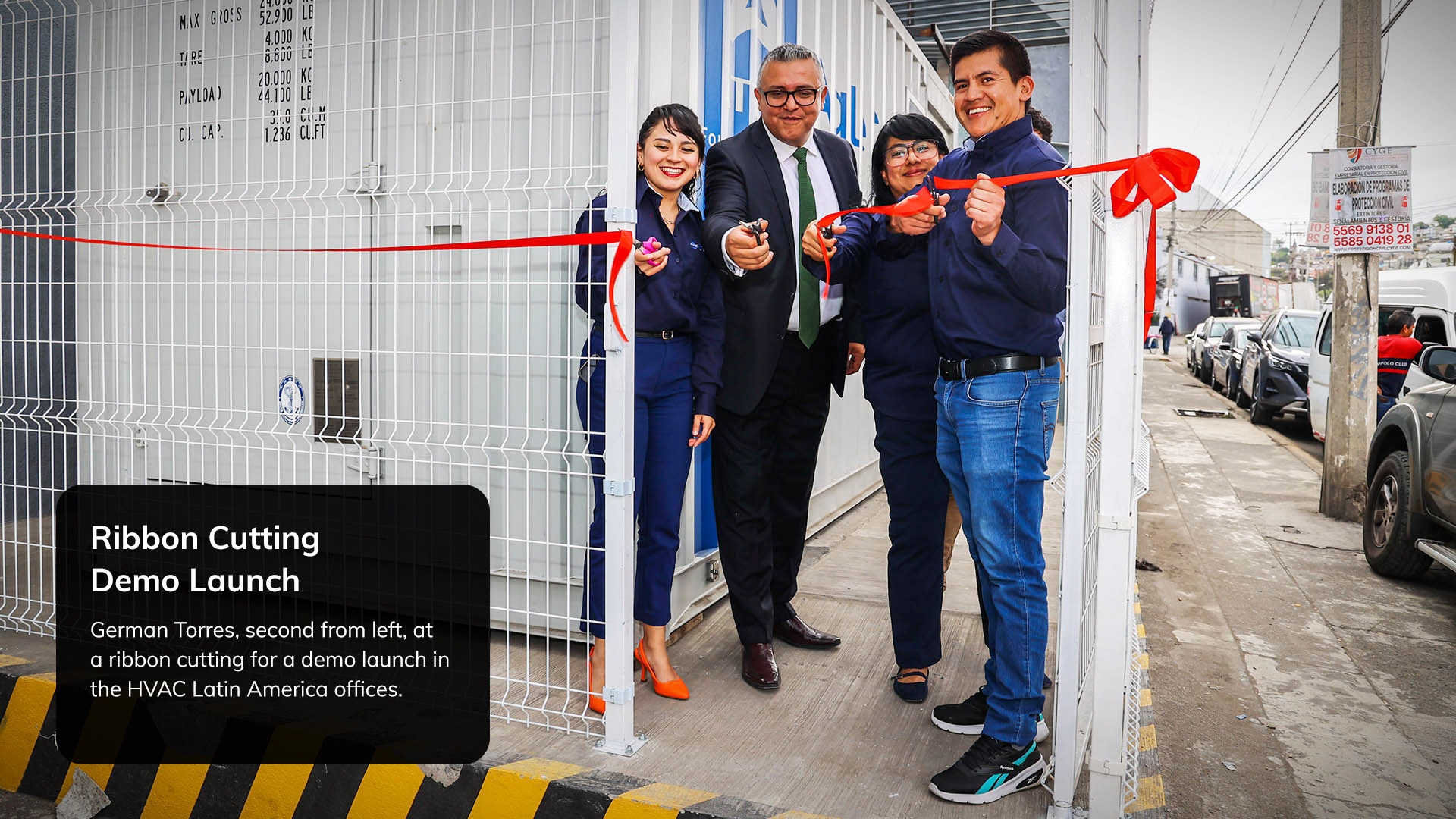Reliability, speed and convenience: Exploring the non-negotiables of cross-border payment services for Latin America’s SMEs
Ventilation and air conditioning system unit sales are generally low margin deals. So Germán Torres, sales director at Mexico-based HVAC Latam knows it's crucial to strategize to maximize every penny, especially when dealing with international payments.
Torres buys products from Spain, Italy and China and then sells them to customers in Central America, Mexico and the United States. On the best of days, he loses as much as 1% of his already slim margin to exchange rates. On the worst of days, a small typo can cause a foreign bank to hold funds for up to two months, creating problems with everything from payroll to inventory.
“The uncertainty is very problematic and generates a lot of stress because you don't have anyone to ask for a solution,” says Torres.
As a business owner dealing with cross-border payments, Torres is not alone in his struggle. According to Mastercard’s 2023 Borderless Payments Report, three in five small and medium-sized enterprises (SMEs) are now sourcing more suppliers internationally than 12 months previously. And that number is slated to grow even more in the near future. Globally, 65% of SMEs are planning to source more suppliers, partners and workers across several countries to diversify against risk, according to the report. Those figures jump considerably in Latin America, particularly in the two largest economies in the region: Mexico (77%) and Brazil (76%). And with those plans to source more abroad comes greater need for quicker, cheaper and simpler ways to make cross-border payments.

Cross-border payment pain points faced by SMEs
For many SMEs in Latin America, cross-border payments are anything but easy. The typical cross-border payment process for an SME in Latin America involves a local bank in one country working through a network of correspondent banks to transfer funds internationally. Funds can get stuck for weeks due to errors or issues at the intermediary banks. What is more, the SME also may not know the exact amount the receiver will be credited by his/her bank, which can create a lot of reconciliation issues for the receiving entity. While large companies have the in-house payments expertise and stronger banking relationships needed to blunt any potential downsides from the process, SMEs struggle to navigate these complexities.
“Right now, a transfer could take 10 hours, or it could take 84 hours,” says Imer Vigil, CEO of Happy Tours Travel Agency, Inc. “This has been incredibly stressful for us.”
Vigil’s travel agency specializes in trips for Hispanic immigrants visiting friends and family in their countries of origin. With offices in both the U.S. and El Salvador, Vigil transfers up to $120,000 per month from the U.S. to El Salvador to fund operations and payroll. But because of uncertainty around how long it takes to receive funds, the company has had to adjust internal processes, like cut-off times for commission payments to travel agents, which has a knock-on impact on revenue and growth.
“Cross-border platforms with direct integrations to partners in the receiving countries provide banks with more control over the end-to-end payment experience and economics, enabling fast, trackable and cost-efficient transfers,” says Walter Pimenta, Executive Vice President, Commercial and New Payment Flows for Latin America and the Caribbean at Mastercard.
Banks offering digital solutions help too. “Digital payments systems simplify transactions, reduce costs and enhance the reliability of international transfers,” adds Pimenta.
The digital pivot by small businesses in Latin America is encouraging. According to Mastercard’s 2023 Borderless Payments Report, approximately two-thirds of SMEs in Mexico, Colombia and Brazil currently use an app for cross-border payments. “Yet, this also suggests large use levels of personal accounts. This is because the digital tools that are currently being provided by banks are often designed for consumers or for large businesses, so they are either too simplistic or overly complex for SMEs,” notes Pimenta.
In addition, developing digital tools can be a complex task for a single bank to tackle, as it touches many internal systems whose roadmaps are already tight with regulatory and modernization requirements. Many banks simply do not have the resources to take on such tasks.

Finding solutions in new partnerships
Innovation Futurist Shivvy Jervis believes that streamlining cross-border payments for Latin American businesses will require technology solutions as well as societal changes.
“Right now, every Latin American nation has its own compliance and reporting standards and foreign exchange controls that can slow the speed and efficiency of cross-border payments. The key to overcoming many of these challenges lies in harmonizing regulation and standards and the creation of networked partnerships,” says Jervis.
“Companies like Mastercard have been at the forefront of fostering partnerships with banks and fintechs to provide broader networks and enhanced capabilities in cross-border payments,” says Pimenta. “Furthermore, our expertise in navigating regulatory environments and our deep understanding of local market dynamics means we can provide banks and fintechs with solutions that help them comply with both local and global regulations.”
Mastercard Move, Mastercard’s comprehensive portfolio of money transfer solutions, provides a one-stop solution for banks looking to ease cross-border payment friction for customers. It provides end users with transparency and choice, by enabling trackable payments, visibility of fees and estimated delivery times. Across the world, Mastercard Move’s reach spans more than 180 countries and more than 150 currencies, with end points including card, account-to-account, mobile wallet and cash payout (all subject to specific market availability).
“The solutions are already here. With local banks leveraging game-changing solutions such as Mastercard Move, SMEs can make payments to a supplier in China or a travel agent in El Salvador almost instantly through their bank’s website or app with competitive rates and without having to set up a separate account in local currencies,” notes Pimenta.
“When we started our business in 2008, we were transferring about $5,000 per month cross border,” says Vigil. “A tiny fraction of the money we move now. Working across country lines has been a big part of our success. With banks providing us with new and better solutions, our growth is only going to accelerate.”
For further information about Mastercard’s money movement solutions, visit the website.
